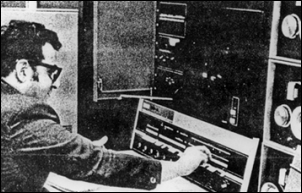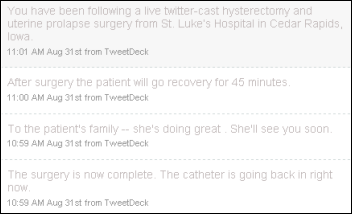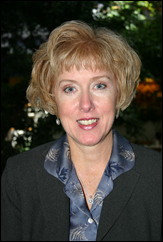"A valid concern..." Oh please. Everyone picks the software they like and the origin of that software is an afterthought.…
News 9/04/09
Children’s Boston releases free iPhone infectious disease outbreak application
Rosemary Kennedy leaves Siemens Healthcare for National Quality Forum
Three HIEs are sharing data
From HomeCareMD: “Re: PDF Healthcare. Our small house call practice has been using PDF charts and CCRs for five years and love the convenience and universal applicability of Adobe files. However, it is still hard to direct-admit a patient to a hospital from a house call by sending the PDFs of images and chart elements in advance so the receiving hospitalist / institution has proof of the clinical state signed by the referring physician. All our regional hospitals use silo EMRs which block out any e-mails or attachments unless you pay to play on their medical staff and/or pay to create middleware. My understanding is that ONCHIT is about to break up this cartel-like behavior by requiring realistic ‘interoperability’ standards in such settings. Let’s hope they do. Even HIPAA has reduced requirements in urgent care situations.”
From RockStar: “Re: meaningful use. To Winchester: not sure about your angst. We find MU to be straightforward and have assured our CEO that we will be compliant with all 2015 objectives and measures. Can you be more specific about your concerns?” Personally, I think too many organizations are waiting for what is likely to be an unsurprising set of criteria only to find that they’re too late to get up and running in time.
From The PACS Designer: “Re: Web 2.0 popularity. While we haven’t seen many Web 2.0 solutions in the healthcare space, there is much more being done elsewhere that has been bringing value back to the institutions that employed Web 2.0 concepts. McKinsey & Company recently polled almost 1,700 executives and found that most are benefiting from the Web 2.0 experience. Healthcare will be joining these early adopters in the coming years since collaboration can only bring more high quality digital solutions to healthcare practices!”
Listening: Nick Cave and the Bad Seeds, bleak but insightful theatrical dirges, one of my all-time favorites.
I love the online photo celebration of Meditech’s 40th anniversary (check out the “dial up table” shot). I’m still hoping for that Neil Pappalardo interview one of these days. Also announced (albeit belatedly) is that some of the company’s execs met with David Blumenthal sometime before Vice President Biden’s grant announcements back in August at Mount Sinai Hospital in Chicago (a Meditech customer).
Speaking of interviews, I thought I had an inside connection that would get me one with Patrick Soon-Shiong, the billionaire who’s donating $1 billion for “the Bell Labs of healthcare,” but he shot me down.
Healthland partners with the Performance Management Institute to offer an executive information system for its small hospital customers, touting its ability to provide evidence of meaningful use.
Froedtert & The Medical College of Wisconsin credits its applications from Surgical Information Systems with reducing surgical late charges from 43% to 1.1%.
It’s a busy month for HIT meetings and Webinars according to my online calendar. You can add your event for free, you know, which will put it on every page of HIStalk.
Newcastle Hospitals NHS Foundation Trust is delaying its big-bang Cerner go-live via its vendor, UPMC. I just realized that it’s an odd, two-way street: UPMC is implementing HIT systems overseas, while Cerner, through its employee clinic, is delivering patient care.
August was a good month for HIStalk readership, especially since summers are always slow. It was the third-busiest month ever, in fact (barely missing the #2 spot), increased somewhere between 40 and 50% over August 2008. You never know with other sites copying what they see here. Luckily for me it’s harder than it looks, especially for someone who doesn’t have industry background or experience, so they aren’t putting a dent in readership. Thanks for reading. I don’t advertise, so if you want to help, e-mail your colleagues a link, possibly lying and telling them I ran an expose’ about them. That should get me one page view, anyway.
Ohio Pain Clinic creates a virtual clinic with free online patient tools such as videos, activity tracking, and a full electronic medical records system designed specifically for pain medicine. The $1 million EMR system was paid for by outside investors, which is probably an interesting story on its own.
Weird News Andy notices that another hospital decided to Tweet a live surgery. The fact that the Tweeter was a hospital media relations specialist is a good indication that the motivation was right out of some hip marketing newsletter, but the patient’s family said it was nice for them, at least. Of course, if a marketing person sat through all surgeries, they could convene a private family conference call or something instead of using Twitter for the whole world to see, but that just wouldn’t be as cool to report back to the New Media people. Wonder what the plan was if the patient died on the table? And how do you top that — a Tweeted Code Blue?
Children’s Boston develops a free iPhone application to show infectious disease outbreaks in real time, complete with alerts when the bugs are approaching. They call it “participatory epidemiology”. I guess you head for the uninfected hills when you get the beep.
The Pfizer whistleblower will be paid $52 million. Correction: he and his lawyers will be paid $52 million, which probably means he’ll end up owing money.
Richard Tayrien, DO is named chief health information officer of HCA, a newly created position overseeing EMR development and implementation that reports to CMO Jonathan Perlin. He’ll come over from Catholic Healthcare West, where he’s been VP of clinical information systems. Some of the sloppy fact-checking rags apparently don’t understand osteopathic medicine, taking the “Dr.” bait and titling him an MD (although the press release could have been more helpful and said so since “Dr.” covers a huge swath of non-specific ground, but it did say he graduated from a school of osteopathic medicine rather than an allopathic school).
An interesting snip from an interview with the CEO of the best-known medical tourism hospital in the world, Thailand’s Bumrungrad International Hospital (he also shot me down, or more precisely, ignored me completely when I e-mailed to suggest an interview a year or two ago). Anyway, “In 2007, Microsoft was looking to enter the health care arena … and it purchased the H2000 software from a company called Global Care Solutions and they renamed it Amalga HIS. As part of that transaction, we became a partner with Microsoft to develop some of the next generation of the software, which will be a totally digital version…. We’ve identified 37 modules that are the core of the offering and we’ve got various teams working on all of those and some of them have already migrated [to the new modules]. We have different releases coming out, about two a year, over the next to year so that we will be a totally digital hospital … But it requires doctors to type in these things and it’s not easy to get doctors to do that. It could also take something away from the doctor-patient interaction if the doctor has his head buried in a computer rather than looking at the patient and having a dialogue with the patient…. Hospitals, not just our hospital but I think hospitals everywhere, are facing this challenge.”
A laptop containing information on 40,000 patients from the Naval Hospital in Pensacola, FL is missing from the pharmacy department. It was beat up, so they’re thinking (praying) that maybe somebody had it destroyed but didn’t do the paperwork.
HERtalk by Inga
The American Dental Association and HL7 agree to develop joint HIT standards, which should be of great interest to EMR vendors. The goal would be to create consistent IT standards and enhance the coordination of care between medical and dental practices. Does this mean, perhaps, that ambulatory practice management systems might one day be suitable for dental offices?
The public healthcare IT programs for Boston and Denver are named winners of the 2009 Davies Award of Excellence in Public Health. Boston was recognized for its syndromic surveillance system that enables officials to track diseases seen in emergency rooms across the city. Denver was honored for its integrated health information system that includes a patient-accessible web portal for lab results.
Norton Healthcare (KY) hires MEDSEEK to rebuild its consumer website. The official press release says that Norton “partnered with MEDSEEK to accelerate its eHealth ecoSystem strategy”, which meant nothing to me. You kind of have to read a paragraph or two down to understand that Norton is really just building a better website. When did it get so hip to come up with confusing names?
Rosemary Kennedy RN leaves her Siemens Healthcare job as chief nursing informatics officer to be named senior director of nursing and healthcare informatics for the National Quality Forum.
Here’s a shocker: the 30% of doctors who earn $250K or more and significantly more satisfied with their careers than those making less money. Overall, pediatricians represent the most satisfied specialty. Hopefully you (or your doctor) are not one of the 15% “very dissatisfied” with his/her career.
Three HIEs are now able to share data, which I think is pretty exciting stuff. HealthBridge from Cincinnati, Indiana HIE from Indianapolis, and HealthLINC from Bloomington are now able to send to one another data on their combined 12 million patients.
Spartanburg Regional System (SC) plans to deploy Concerro’s shift management system, a component of Premier health alliance’s LaborConnect program.
Teleradiology company Franklin & Seidelmann Subspecialty Radiology raises $12.5 million to expand into new markets and add services.
Allscripts sends out a tweet that 83 people attended its EHR Stimulus tour stop in Las Vegas today. There seems like there should be some clever gambling joke in there somewhere, but it’s not coming to me.
This settles it. I am learning Spanish so I can spend a few of my early retirement years in Mexico. Thousands of Americans have already headed down there, lured by the flat $250 a year fee for a health care plan with no limits, courtesy of the Mexican Social Security Institute. The plan has no deductibles, free meds, free tests, eyeglasses, and dental work. The biggest question left to figure out is mountains or beach.










Oh, that’s an easy one… – beach, Pacific side. (No hurricanes over there.)
RE: Ambulatory practice management systems being suitable for dental offices – Running the risk of aging myself, anyone else remember the old Cycare product “Dentalis”? It was the dental equivalent of “Medicalis” which was consumed by then HBOC during their vendor-gobbling days. The two products were extremely similar. I’m sure it’s somewhere on a dusty shelf at McKesson now.
Re: the big bang that fizzled at Newcastle
Lessons from Pitt are that it might be, mates, that the big bang approach, having been the modus in the US, was the etiology for adverse events such as increased mortality and new mistakes reported in peer reviewed medical journals. The combination inferior IT algorithms and with the big bang is dangerous.
The “dial-up table” work-flow process was implemented by Howard Messing’s Large Hospital Group (MS1200). That was a practice unique to that group which was situated on the first floor of the Westwood building.
Up on Level 2, those of us in Roberta Grigg’s Small Hospital Group (MS1100), relied on the “dial-up room” methodology. Rather than congregate at a central point out on the floor we chose to take care of our remote business while in a series of small conference rooms which were dedicated to this same activity.
Advantage: I’d say the second floor’s conference room approach was preferable. People didn’t smoke in the conference rooms while trouble shooting issues. The centralized group out on the first floor had an ash tray that often looked like one of the great pyramids of Giza!